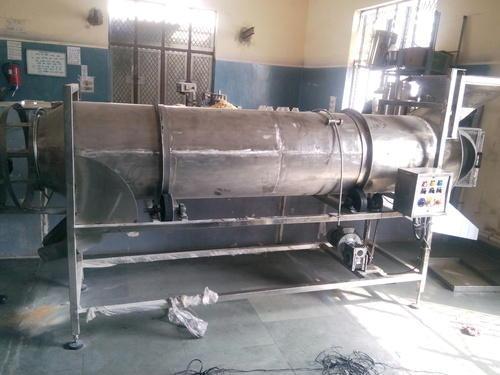Designing Mechanical Makhana Harvester

Mechanical Makhana Harvesting- A technological break through
Makhana also known as the Black diamond globally, has become a household name for healthy snacking option. Packed with vital nutrients like calcium, potassium, magnesium, iron, Makhana seeds and flakes are used in Ayurvedic and Chinese medicines. To meet the ever increasing demand of this wonder-nut, farmers, retailers and wholesalers have a humongous task of delivering high quality produce to consumers across the world within stipulated time.
Cultivation and harvesting of Makhana seeds and flakes are heavily dependent on weather conditions, farming methods and the farmers who harvest them. Manual cultivation and harvesting of Makhana seeds and flakes has been a very cumbersome process posing many problems to make availability of the quality Makhana to retailers. This has led to a new technological revolution to provide mechanical harvesters for quick and easy harvesting of the quality Makhana seeds and flakes.
Technological transformation in Harvesting process of Makhana
Traditionally, harvesting of Makhana has been done manually by collecting scattered seeds from the bottom of the pond. Usually, harvesting takes place between the month of August to October. Mostly, mallah community engages in harvesting of Makhana seeds and flakes.
The farmers dive under the water and reach the bottom surface of the pond.He remain under water by holding his breath and drags the mud towards “Kaara”. It is called kaara in the colloquial language which is a bamboo pole. The diver collects the mud formed near the bamboo pole and collect it. Later, it is sieved that is locally made with bamboo screen which is called “Ganjaa”.
This manual process of harvesting poses a lot health threats to the divers or farmers who dive under water for harvesting of Makhana. The mud and water enters the ears and nose of divers while harvesting. Also, many skin infections and diseases were found due to this process. This has led to a need for health protecting process of harvesting.
To put an end to the drudgery of the lives of divers who go under water for harvesting of Makhana, a new gear has been developed which protects the divers from the skin infections and protect their eyes, nose and ears as well. The diving gear gives the divers the comfort to stay under water for a longer period of time up to 1 hour without any health issues. The gear also protects the divers from prickly plants, insects, mud under water that can be life threatening.
Addressing these health problems caused during harvesting, a new and improved system has been developed in Bihar by the Central Institute of Agricultural Engineering, Bhopal and Regional Centre for Makhana, Darbhanga. This new system has a very sophisticated technology of a floating platform. The platform has a cylinder weighing 10 litres which is filled with compressed air along with a regulator on it. It also has a hose pipe of 10 metre in length with a regulator. Divers are given a mini diving kit which has a suit with a cap and mask that protects them from any unwanted insects, thorns etc. With the comfort of protected gear, the productivity of divers increases exponentially.
Bhola Paswan Shastri agricultural Institute has developed a harvesting machine making farmers’ life very easy and comfortable for collection of Makhana. As of now, 24 drums have been attached together to make this machine. This machine has been made by Dr. Anil Kumar. This has revolutionised the Makhana industry by increasing the efficiency in harvesting and Dr. Anil Kumar aims at making this machine available in the hinterlands of India.
Another technological marvel has taken place in the agricultural practices for Makhana. ICAR’s Ludhiana-based Central Institute of Post-Harvest Engineering and Technology (CIPHET) has developed a machine that helps in cleaning, drying, popping, grading and processing of Makhana. It would cost 15 lakhs and will produce 13 kg of Makhana and will give excellent results within 22 hours as opposed to 2 to 3 days.
Though many such technological advancements are being taken place in the cultivation of Makhana seeds and flakes, there are many issues posing as problems like affordability, no desire to try new technology, illiteracy etc. However, Government is offering loans and technical know how to farmers to upgrade them.